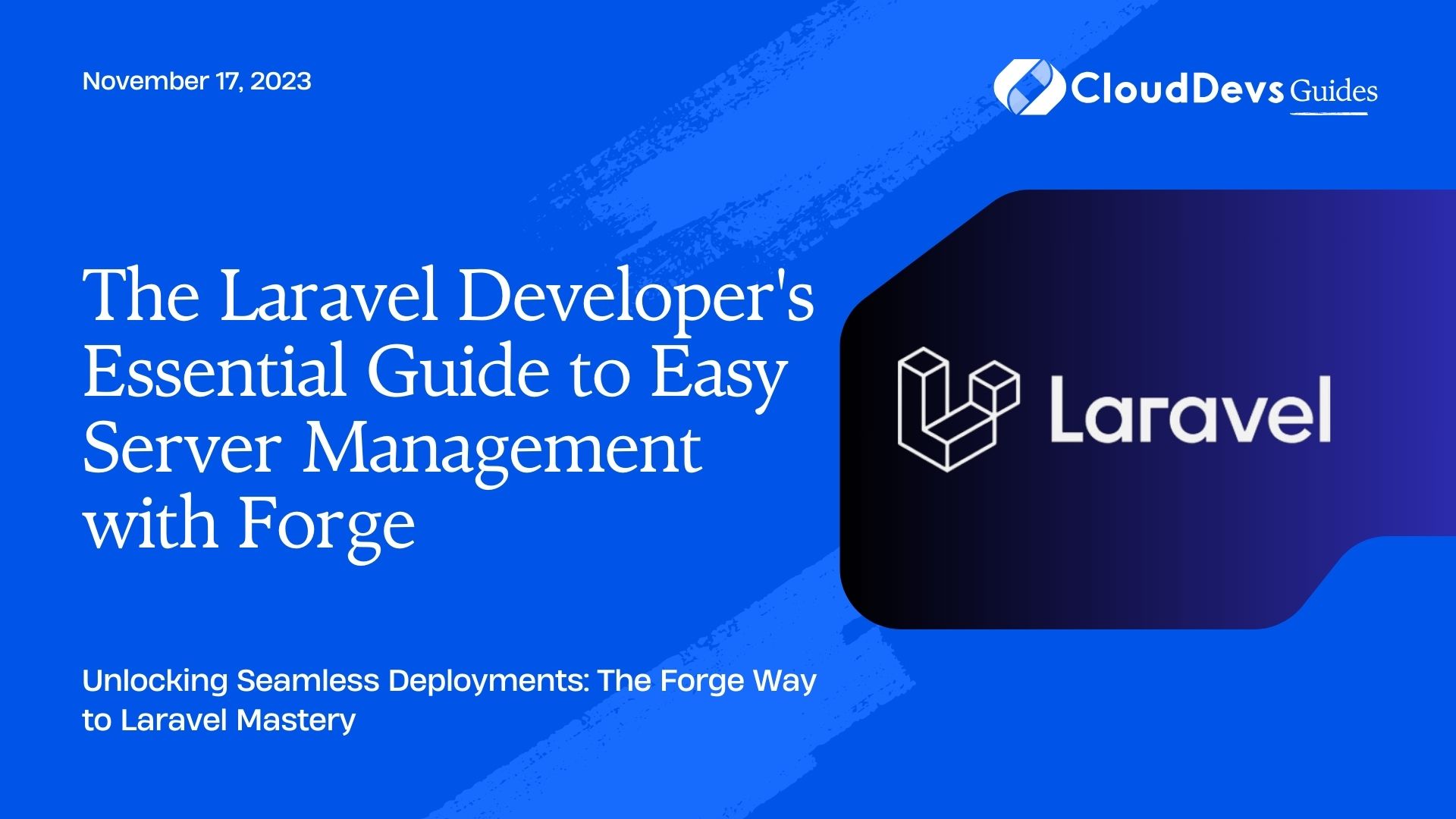The Laravel Developer’s Essential Guide to Easy Server Management with Forge
For those who build and deploy applications using Laravel, server management can often seem like a daunting challenge. Setting up, maintaining, and optimizing servers is no trivial task. Enter Laravel Forge: a server management platform designed explicitly for Laravel applications. It abstracts away the complexities of server provisioning and management, enabling developers to launch and maintain apps with ease.
In this article, we’ll delve deep into the world of Laravel Forge, exploring its core features and showcasing how it simplifies server management for Laravel developers.
1. What is Laravel Forge?
Laravel Forge is a server management and provisioning tool created by the Laravel team. It offers a user-friendly interface to set up and manage servers on popular cloud providers such as DigitalOcean, Linode, AWS, and more. With Forge, developers can automate deployments, manage SSL certificates, configure job queues, and handle various server-related tasks without diving into intricate server details.
2. Why Choose Laravel Forge?
Here are some compelling reasons:
- Speed and Efficiency: Setting up a new server with everything needed for a Laravel app can be done within minutes.
- Integration with Popular Cloud Providers: Directly link your cloud provider’s account and let Forge handle the provisioning.
- Automated Deployment: Implement a seamless deployment process using Git hooks.
- Database Management: Easily manage databases, create backups, and restore points without accessing your server directly.
- Security: Forge enables free SSL certificates, IP whitelisting, and consistent security updates.
- Queue Worker Configuration: Set up and manage Laravel queue workers directly from the Forge dashboard.
3. Examples of Laravel Forge in Action
3.1. Setting Up a New Server
Once you’ve linked your cloud provider account to Forge, creating a new server is straightforward.
– Choose your desired provider (e.g., DigitalOcean).
– Select your server size and region.
– Specify your database preference (e.g., MySQL or PostgreSQL).
– Hit “Create Server”.
Forge then provisions the server with all the necessary software like Nginx, PHP, MySQL, and other required dependencies. This process that traditionally could take hours of manual work is accomplished in mere minutes.
3.2. Automated Deployments with Git
Say you’ve pushed changes to your Git repository and want these updates live. With Forge, you can set up auto-deployment.
– Connect your Git repository (e.g., GitHub, Bitbucket, or GitLab).
– Specify the branch you want to deploy (commonly `master`).
– Enable “Quick Deploy”.
Every time you push to the specified branch, Forge will automatically deploy the changes to your live server.
3.3. Database Management
You don’t need to be a database expert to manage your Laravel application’s database with Forge.
– Navigate to the ‘Databases’ tab on your server dashboard.
– Create a new database by specifying its name and hitting ‘Add Database’.
– Under ‘Database Backups’, set up daily backups to ensure your data is always safe.
– Restore databases easily by selecting a backup and choosing ‘Restore’.
3.4. Implementing SSL Security
Forge integrates with Let’s Encrypt to offer free SSL certificates.
– Navigate to the ‘SSL’ tab.
– Click on ‘Obtain A New SSL Certificate’.
– Select ‘Let’s Encrypt’, specify your domain, and request the certificate.
Forge will handle the rest, ensuring your Laravel app is securely served over HTTPS.
3.5. Setting Up Queue Workers
Managing Laravel’s job queues becomes effortless with Forge.
– Go to the ‘Queues’ tab.
– Specify the connection, queue, and other configurations.
– Hit ‘Start Queue Worker’.
Forge will ensure your queue workers are consistently running, processing jobs without a hitch.
Final Thoughts
Laravel Forge is an invaluable tool for Laravel developers, removing the hassles of server management and letting developers focus on what they do best: building amazing applications. Its integration with popular cloud platforms, automated deployment features, and intuitive user interface make it a must-have for anyone serious about Laravel development.
By leveraging Forge, developers can save time, enhance productivity, and ensure their applications are deployed on optimized, secure, and well-maintained servers. If you haven’t given Forge a spin, now might be the perfect time to do so!
Table of Contents







